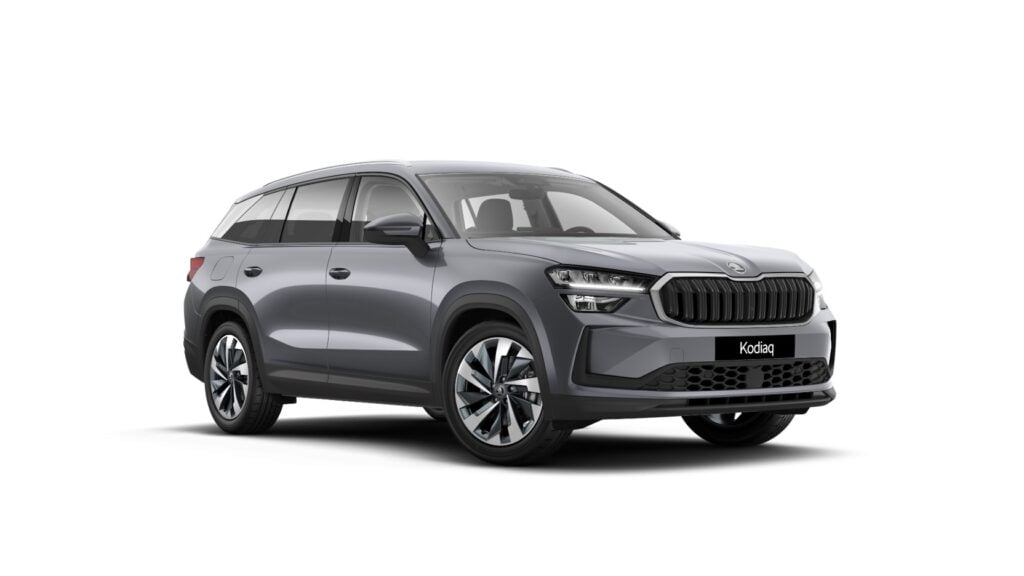Ford‘s e-Transit, the all-electric version of its long-serving commercial king, has hit the Australian market from $104,990.
The e-Transit is pitched as the same affable, familiar and functional Transit that faithfully serves working motorists, and offers lower running costs, zero tailpipe-emissions and the smooth refinement of an Electric Vehicle powertrain.
Australia is to receive the 2023 Ford e-Transit in exclusive LWB configuration, in ‘mid-roof’ guise as standard, with the option of a ‘high-roof’ variant asking a further $1500.
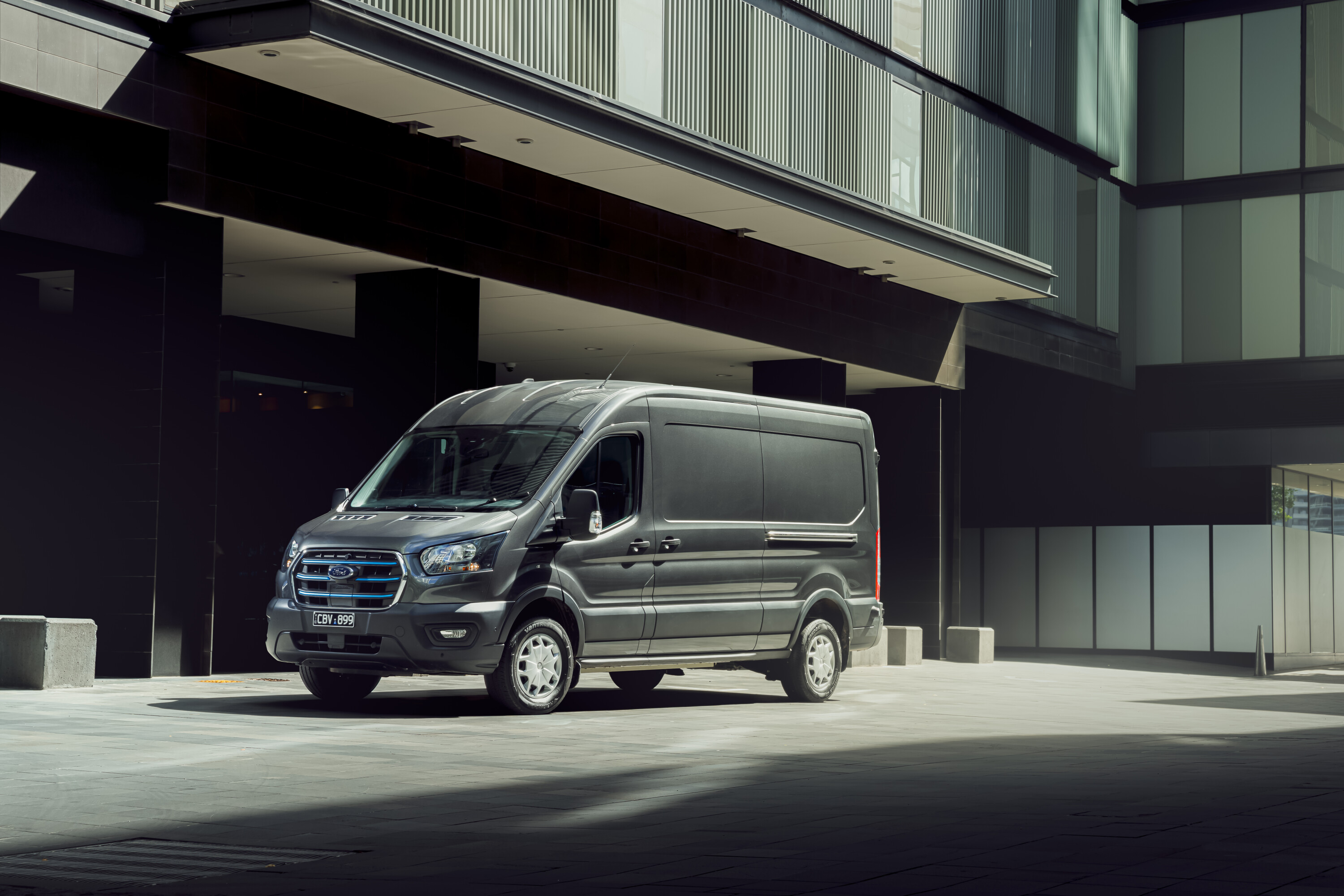
The e-Transits pack a 68kWh battery, delivering a WLTP claim of 307kms for the mid-roof e-Transit, and 295kms for the slightly less aerodynamic high-roof vehicle. DC fast charging (at 115kW) sees a 15-80 percent topup take approximately 34 minutes.
Elsewhere, the electric van is the most advanced Transit from Ford yet, with a number of connected services and features available to operators through the FordPass App, the Detroit giant’s latest SYNC4 infotainment system and a large 12-inch display.
2023 Ford e-Transit pricing
| Ford e-Transit | Price (exc. on-roads) |
|---|---|
| Mid-roof | $104,990 |
| High-roof | $106,490 |
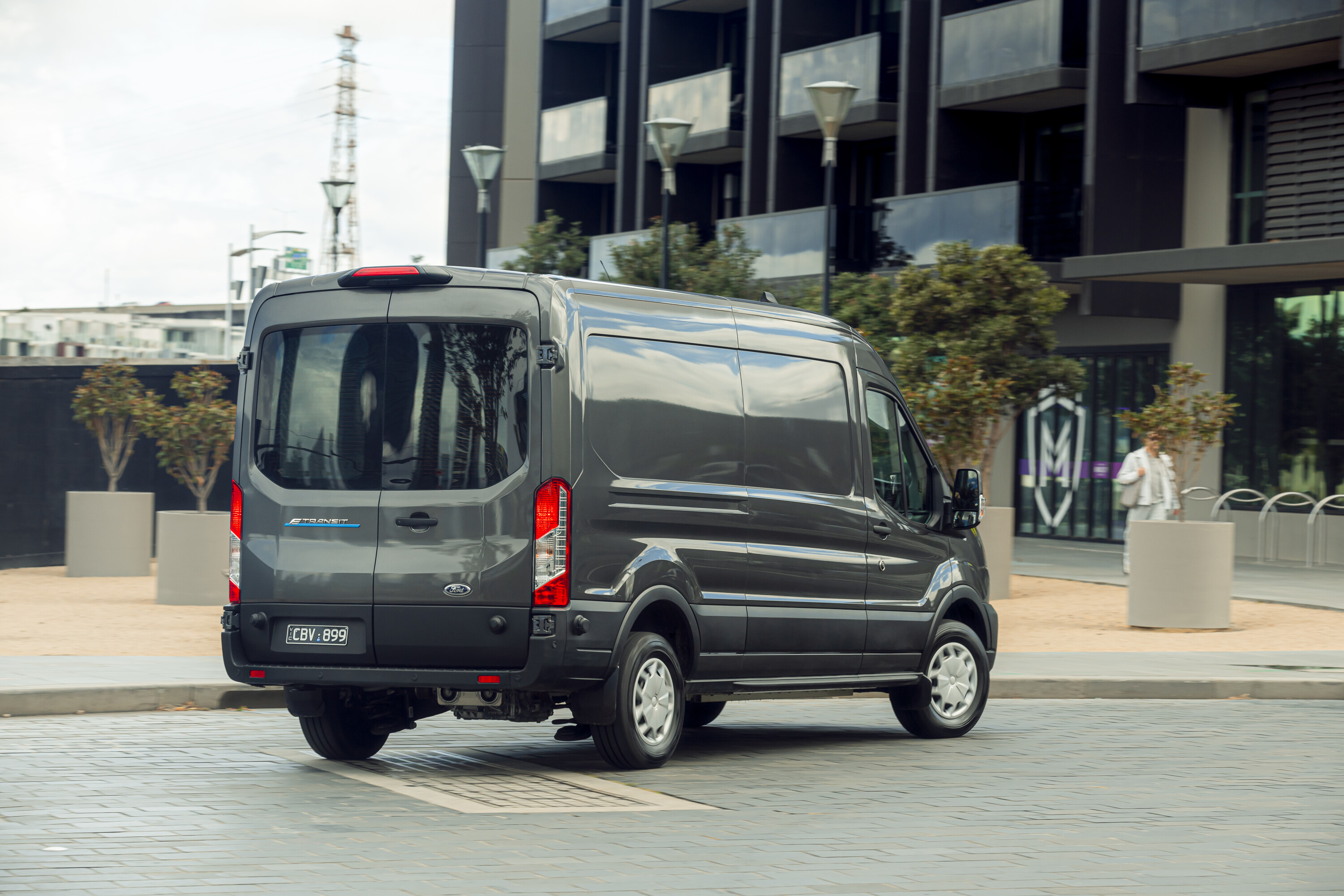
2023 Ford e-Transit features
The Ford e-Transit shares many of its standard features with the rest of the existing Transit range, and include:
| 16-inch steel wheels | 12-inch infotainment screen |
| Ford SYNC4 infotainment system | DAB+ Radio |
| Wireless Apple CarPlay & Android Auto | Drive Modes: Eco, Slippery, Normal |
| Satellite navigation | Over-the-air updates |
| Two USB ports | FordPass Connect |
| Four-speaker stereo | 4.2-inch semi-digital instrument cluster |
| Single-zone climate control | Artificial leather-wrapped steering wheel |
| Cloth upholstery | Rain-sensing wipers |
| Heated front seats |
Headline features include Ford’s latest SYNC4 infotainment system, combined with the impressive and crisp 12.0-inch display. SYNC4 facilitates wireless smartphone mirroring, for both Apple CarPlay and Android Auto, and adds real-time connected satellite navigation, scheduled pre-conditioning and a digital owner’s manual for ease of use.
Technology aside, as a working van, the e-Transit’s cabin comes packaged full of storage bins, nooks and crannies, delivering a durable, ergonomic and functional roadgoing workspace.
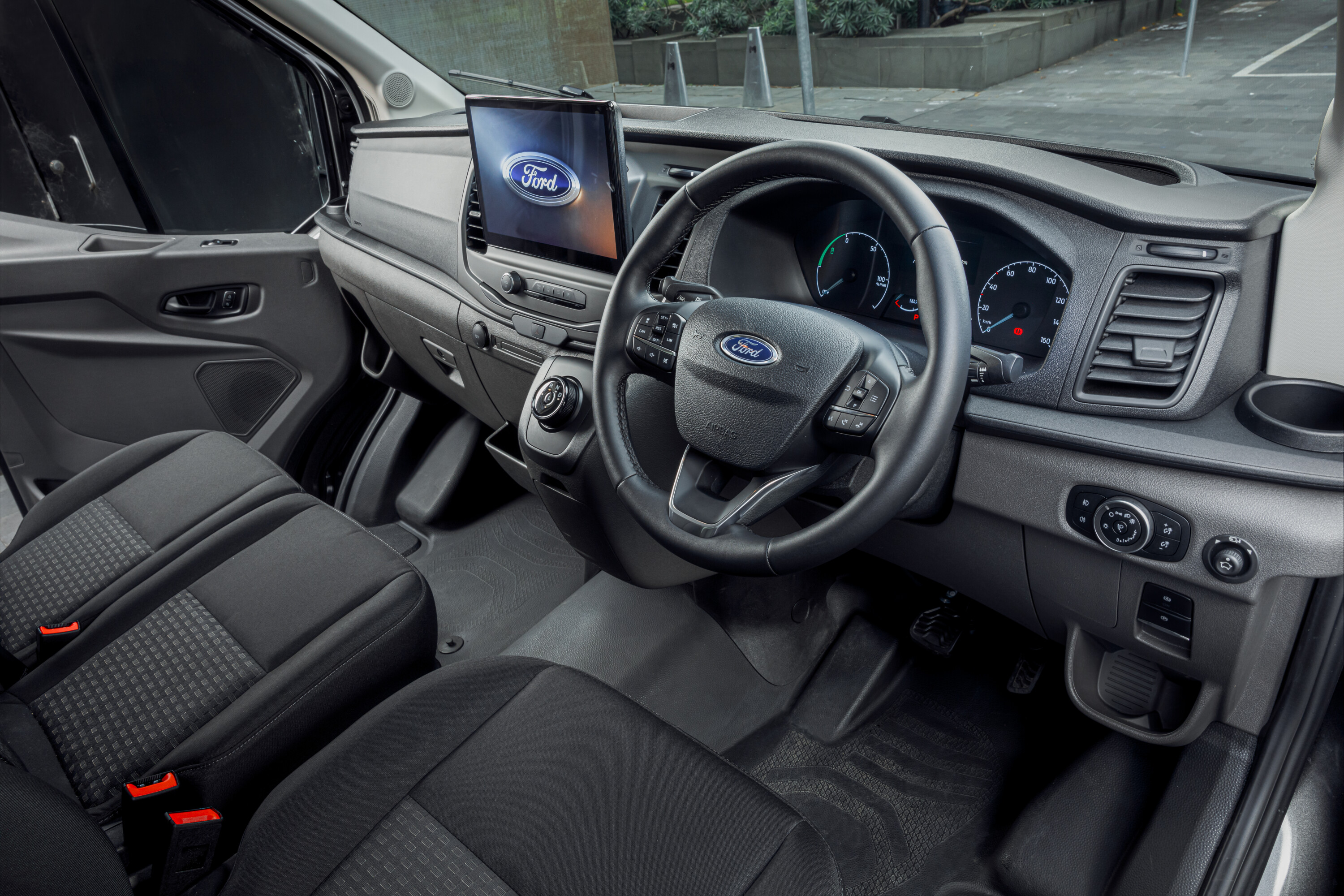
Operators of e-Transits will also make great use of Ford’s Connected Services, available through the FordPass mobile phone app.
A number of over-the-air services are available, including Remote Start, Remote Unlock, as well as remotely sending navigation routes from your phone to vehicle, plus real-time monitoring of vehicle status pertaining to charge state, distance to empty, nearby chargers, charge settings and charge logs.
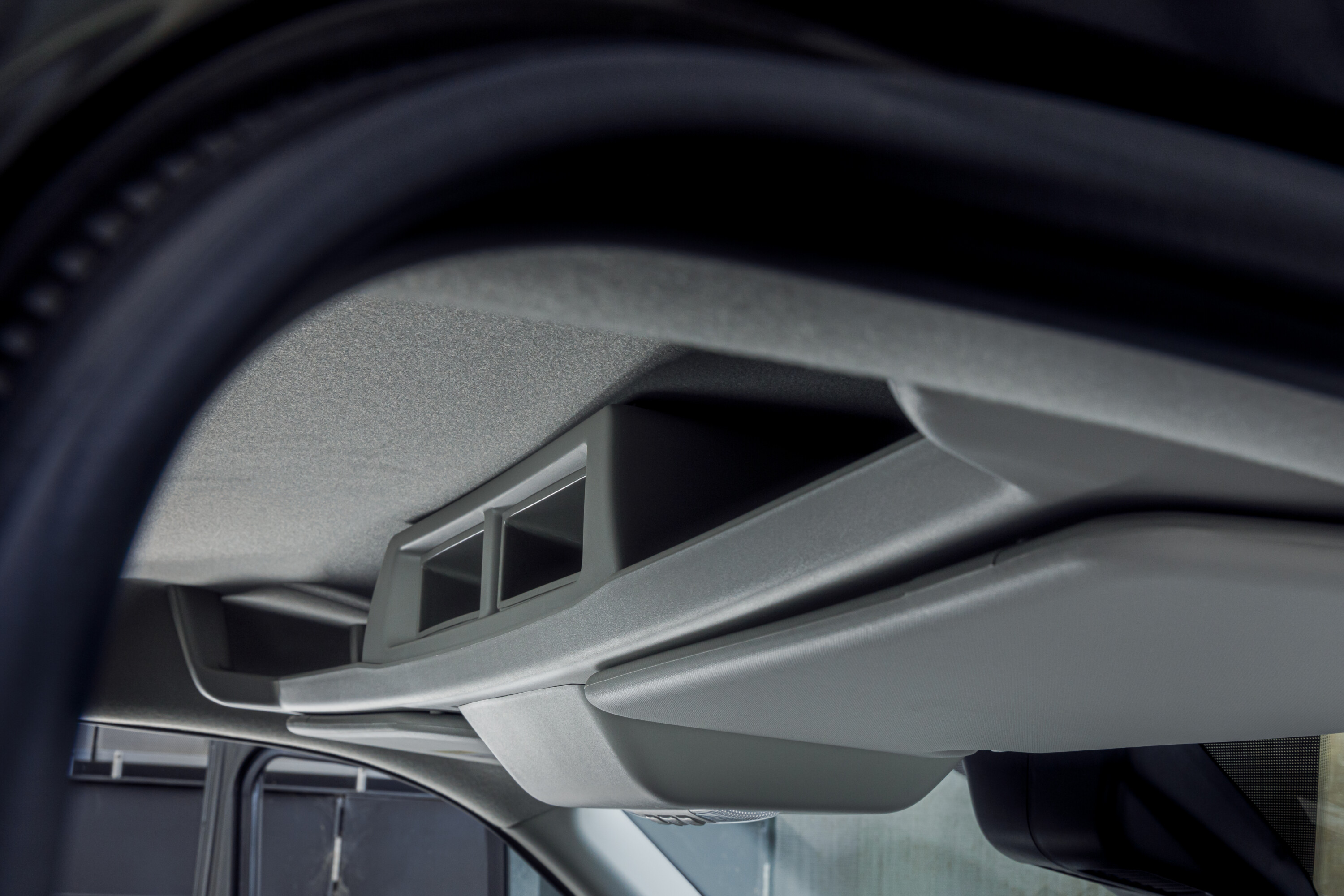
Options
Available e-Transit options include two special paint palettes – titled Prestige and Special Vehicle Options (SVO).
Buyers can also opt to swap the dual-front passenger jump seats with a single seat (reducing cabin occupancy from three to two) as well as the option of dual side sliding doors.
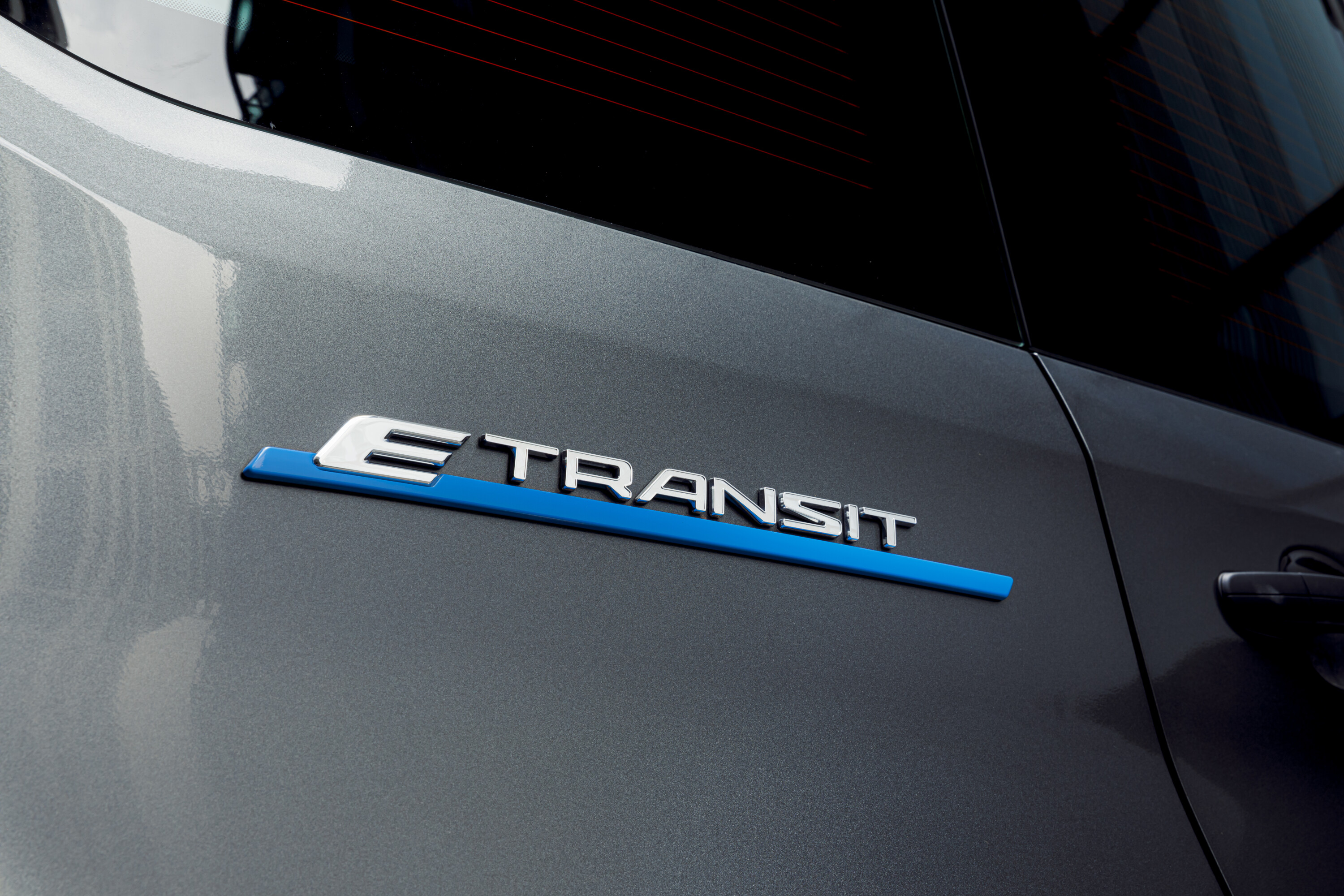
| Options | Price |
|---|---|
| Prestige paint | $700 |
| SVO paint | $1400 |
| Single front passenger seat | $150 |
| Dual side load doors | $1000 |
| High roof | $1500 |
Chassis and powertrain
Ford’s electric commercial van is powered by a 68kWh battery, feeding a single motor, producing 198kW/430Nm, driving just the rear wheels through a single-speed automatic transmission.
The battery is contained, sealed with side impact protection, beneath the load floor, with Ford investing in the redesign of the rear subframe, which houses an independent semi-trailing arm rear end, and the compact electric motor.
The assembled coil sprung unit was designed compact enough for a no compromise approach to cargo capacity, with Australian e-Transits equalling the carrying capacity of the established Diesel Transit 350L RWD variant.
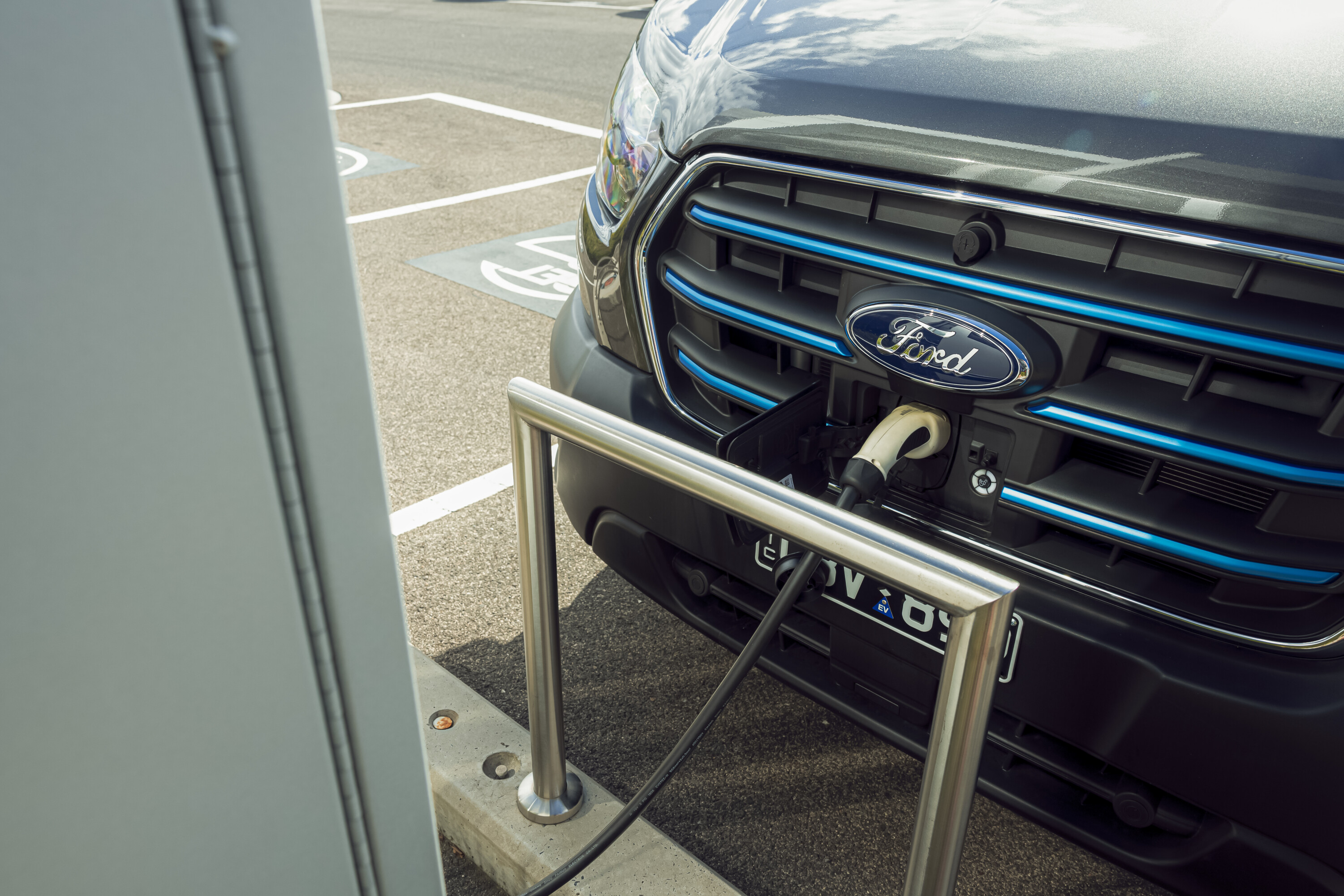
Charging and efficiency
Ford’s e-Transits are easily spotted thanks to their blue-highlighted grille and front-facing charging port.
A complimentary Mode 3, 32-amp charge cable is provided to facilitate charging out in the field.
Charging through the AC wall socket (three-phase 11kW) will see a complete charge cycle take around eight hours, while DC fast charging (at 115kW) will see a 15-80 percent topup take place in about 34 minutes, according to Ford.
Regenerative braking is always active to a certain degree, but is optimised in the Eco Drive Mode.

Cargo capacity and weights
With the battery pack sealed beneath the floor, backed by a new, compact independent coil sprung rear setup, Ford’s new e-Transit delivers an uncompromised capacity when measured against its established, diesel-drinking, counterparts.
The standard e-Transit mid-roof yields 11 cubic metres with an ultimate payload of 1611kg. The taller high-roof variant swells to 12.4 cubic metres of cargo capacity, with a slightly hampered 1566kg.
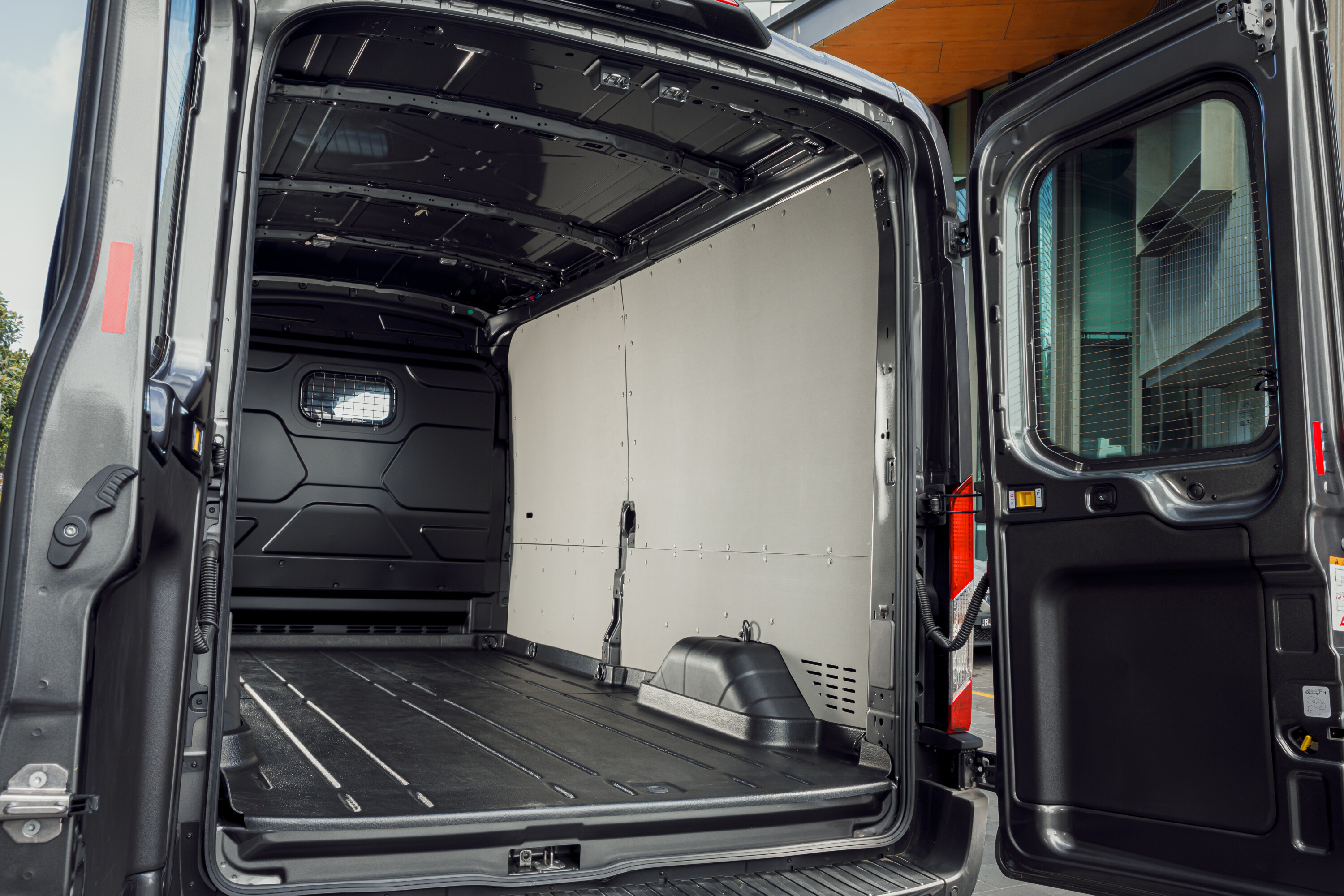
The cargo space, separated from the passenger cabin with a fixed bulkhead, is illuminated with ten tie-down points.
Dimensionally, the load space is remarkably similar to existing Transit variants of this generation, with any load area fitouts able to be transferred to a new e-Transit with minimal modification and downtime.
Rear barn doors open 270 degrees to maintain easy forklift and pallette access.
| E-Transit cargo space | Mid-roof | High-roof |
|---|---|---|
| Load space max (cubic metres) | 11 | 12.4 |
| Gross vehicle mass (kg) | 4250 | 4250 |
| Max payload (kg) | 1611 | 1566 |
| Kerb weight (kg) | 2639 | 2684 |
Safety
Ford’s range of Transit vans (including e-Transit) have not been assessed by ANCAP.
The e-Transit boasts a similar safety suite to the rest of the Transit van range, including six airbags; comprising dual front, side and curtain cushions, as well as active safety features, including:
| Autonomous emergency braking (AEB) w/ pedestrian detection | Adaptive cruise control |
| Blind spot monitoring | Blind spot assist |
| Hill launch assist | Intersection assist |
| Lane keeping aid | Lane departure warning |
| Traffic sign recognition | Rear camera |
| Rear parking sensors | Auto hold |
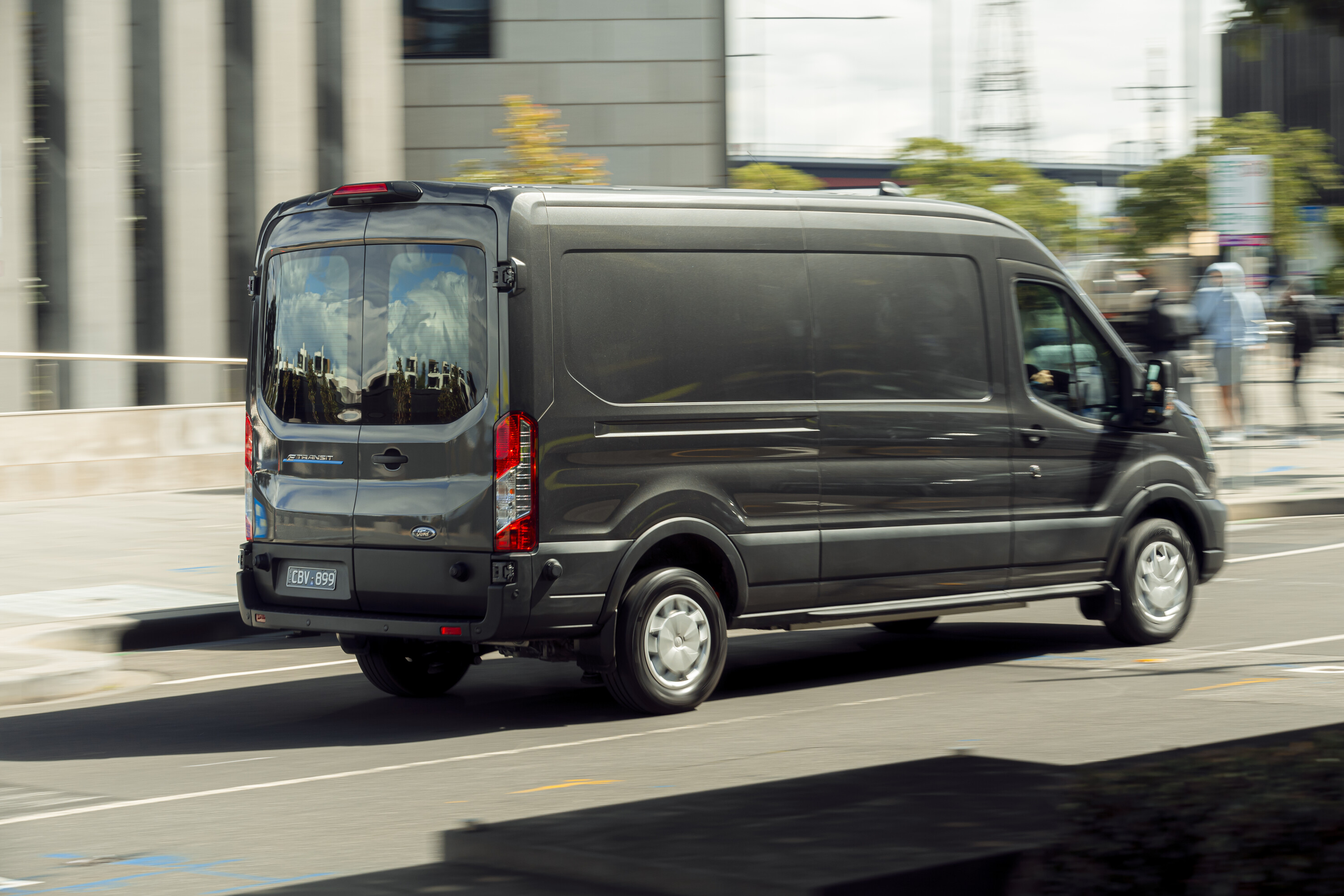
Ownership
The Ford e-Transit will be covered by Ford’s five-year / unlimited-km vehicle warranty, with an added battery and high-voltage components warranty of eight-years / 160,000kms.
Service intervals run annually, or every 30,000kms, whichever occurs first.
Availability
The 2023 Ford e-Transit van is available now, exclusively through the brand’s network of Authorised Ford EV Dealers.
More EV stories to help you choose the best car for your needs
- ? EV news, reviews, advice & guides
- ❓ Short & sweet: Your EV questions answered
- ⚡ New EVs: Everything coming to Australia
- ? Australia’s EVs with the longest driving range
- ⚖️ Best-value EVs by driving range
- ? How much do EVs cost in Australia?
- ? How much more expensive are EVs?
- ⚖️ Number crunching: Is it time to switch to an EV?
- ♻ Should you buy a used EV?
- ?️ Are EVs more expensive to insure?
- ? Costs compared: Charging an EV vs fueling a car
- ? EV charging guide
- ?? EV servicing explained
- ? EV battery types explained
- ? When do EV batteries need replacing?
- ? Hydrogen v EVs: What’s best for Oz?




